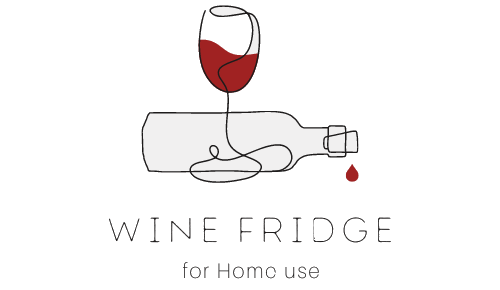If you’ve ever found yourself sipping on a lukewarm glass of wine or chilling with a bottle that’s too cold for comfort, you may be wondering: how can I fix a wine fridge that’s too cold or not cold enough? In this article, we will explore some simple troubleshooting steps that can help you bring your wine fridge back to its optimal temperature. So, whether your vino is feeling a little frosty or craving a chill, let’s uncover the secrets to achieving the perfect serving temperature for your beloved wine collection.
Understanding your Wine Fridge
Recognizing different types of wine fridges
When it comes to wine fridges, there are various types available on the market. It’s important to understand the different types so that you can choose one that suits your needs. The most common types of wine fridges are thermoelectric and compressor-based.
Thermoelectric wine fridges use a cooling system that relies on the Peltier effect, which creates a temperature difference between two electrical junctions. These fridges are known for their quiet operation and energy efficiency. On the other hand, compressor-based wine fridges use a traditional refrigeration system that operates similarly to your kitchen fridge. They tend to be more powerful and suitable for larger wine collections.
Getting to know your wine fridge’s settings
To effectively manage the temperature inside your wine fridge, it’s crucial to familiarize yourself with its settings. Most wine fridges have a digital control panel located either on the inside or outside of the unit. This control panel allows you to adjust the temperature settings to ensure optimal storage conditions for your wine. Take some time to read through the user manual and understand how to operate and set the temperature on your specific wine fridge model.
Knowing ideal temperatures for different types of wine
Different types of wines require different storage temperatures to achieve optimal flavor and aging potential. It’s important to know the ideal temperatures for the various types of wine you plan to store in your fridge. Here are some general guidelines:
- Red wines: 50-66°F (10-19°C)
- White wines: 45-55°F (7-13°C)
- Rosé wines: 46-57°F (8-14°C)
- Sparkling wines and Champagne: 38-50°F (3-10°C)
By understanding the ideal temperatures for different types of wine, you can ensure that your wine fridge is set at the appropriate level for proper storage and enjoyment of your wines.
Diagnosing a Too Cold Wine Fridge
Understanding why a wine fridge might be too cold
A wine fridge that is colder than it should be can pose a risk to your wines. There are several possible reasons why your wine fridge may be too cold. One common cause is a faulty thermostat. If the thermostat is not functioning correctly, it may be continuously cooling the fridge to lower temperatures than desired. Another possible cause is a malfunctioning temperature sensor, which can give false readings and lead to excessively cold temperatures.
Signs your wine fridge is too cold
There are a few signs that can indicate your wine fridge is too cold. One obvious sign is if you notice that your wine bottles are freezing or have icy frost on them. Other signs may include unusual noises coming from the fridge, such as excessive cycling on and off of the compressor, and the failure of the thermostat to maintain the desired temperature.
Potential risks of a too-cold wine fridge
Keeping your wines in a wine fridge that is too cold can have detrimental effects on their quality. The extreme cold temperatures can cause freezing, which leads to expansion and potential damage to the bottle, label, and cork. Additionally, freezing can also lead to the loss of flavor and aromas in your wine. It’s essential to address a too-cold wine fridge promptly to prevent any further damage to your valuable wine collection.

Dealing with a Too Cold Wine Fridge
Adjusting the thermostat
If your wine fridge is too cold, one of the first things you can try is adjusting the thermostat settings. Refer to your user manual to locate the thermostat and make small adjustments to the temperature setting. Start by increasing the temperature gradually and monitor the effects over a period of time. It may take several adjustments before you find the optimal temperature that keeps your wines safe and properly chilled.
Checking for power issues
Sometimes, a too-cold wine fridge may be the result of power supply problems. Ensure that the fridge is properly connected to a power source and that the outlet is functioning correctly. Check the power cord for any signs of damage or loose connections. If you suspect a power issue, try plugging the fridge into a different outlet or contacting a professional electrician for assistance.
Inspecting the cooling system
If adjusting the thermostat and checking the power supply doesn’t resolve the issue, it may be necessary to inspect the cooling system. Any obstructions, such as accumulated dust or debris, could interfere with the fridge’s cooling performance and cause excessively cold temperatures. Carefully clean the condenser, fans, and vents to ensure proper airflow. If the problem persists, it is best to contact a professional for further evaluation and repair.
Seeking Professional Help for a Too Cold Wine Fridge
When to call a professional
While some issues with a too-cold wine fridge can be resolved with simple adjustments or basic maintenance, there are instances in which professional help is necessary. If you have tried troubleshooting and the problem persists, it’s time to call in a professional. Additionally, if you are uncomfortable or unfamiliar with the inner workings of the fridge, it is best to seek expert assistance to avoid causing further damage.
Choosing the right fridge repair service
When selecting a fridge repair service for your too-cold wine fridge, it’s essential to choose a reliable and reputable company. Look for professionals who specialize in wine fridge repair or have experience working specifically with cooling systems. Read reviews, ask for recommendations from friends or wine enthusiasts, and inquire about certifications and licenses to ensure that you are entrusting your wine fridge to qualified technicians.
Working with a repair professional
When the repair professional arrives, provide them with a detailed description of the issue and any steps you’ve already taken to try to resolve it. Be open to their questions and observations as they diagnose the problem. Ask for an itemized quote for the repair costs before any work begins, so you have a clear understanding of the expected expenses. Once the repair is complete, ask for recommendations on how to prevent similar issues from occurring in the future.

Preventing a Too Cold Wine Fridge
Proper fridge maintenance and care
To prevent your wine fridge from becoming too cold, regular maintenance and care are crucial. Keep the fridge clean by regularly wiping down the interior surfaces and shelving with a mild detergent and warm water. Avoid using harsh chemicals that could come into contact with your wines. Additionally, be mindful of not placing items directly in front of the cooling vents, as this can disrupt the air circulation and cause temperature imbalances.
Tips for maintaining the right fridge temperature
Maintaining the correct temperature in your wine fridge is essential to preserve the quality of your wines. Here are a few tips to help you achieve and maintain the right temperature:
-
Check the temperature regularly: Invest in a separate thermometer to place inside your wine fridge to ensure accurate readings. This will allow you to monitor the temperature consistently.
-
Avoid frequently opening the door: Every time you open the door, warm air enters the fridge, causing the temperature to fluctuate. Minimize the number of times the door is opened to maintain a stable temperature.
-
Keep the fridge moderately filled: The thermal mass of wine helps maintain a stable temperature. If you have too much empty space in your wine fridge, the temperature may become more difficult to regulate. Fill the fridge with bottles to create a thermal buffer and enhance temperature stability.
Common mistakes to avoid
When it comes to preventing a too-cold wine fridge, there are a few common mistakes to avoid to ensure the long-term success of your fridge:
-
Placing the wine fridge in direct sunlight or near sources of heat: Excessive heat can cause the fridge’s cooling system to work harder, resulting in lower temperatures inside the unit.
-
Overcrowding the wine fridge: While it’s important to fill your wine fridge to create thermal mass, overcrowding the fridge can impede proper airflow and lead to temperature inconsistencies.
-
Ignoring regular maintenance: Neglecting to clean the condenser, fans, and vents regularly can lead to dust and debris buildup, hindering the fridge’s cooling performance and causing excessively cold temperatures.
By avoiding these common mistakes and following proper maintenance guidelines, you can help prevent your wine fridge from becoming too cold and protect your valuable wine collection.
Diagnosing a Not Cold Enough Wine Fridge
Understanding why a fridge might not be cold enough
Just as a wine fridge can be too cold, it can also have difficulties maintaining the desired cold temperatures. Several factors can contribute to a wine fridge not being cold enough. One possible reason is a faulty thermostat, which may inaccurately regulate the temperature. Additionally, a defective compressor or issues with the refrigerant levels can also result in insufficient cooling.
Signs your wine fridge isn’t cold enough
If your wine fridge is not cold enough, you may notice several signs indicating the problem. The most apparent sign is if your wines are not chilled to the desired temperature. You may also experience fluctuations in the temperature, with the fridge struggling to maintain a consistent cold environment. Similarly, if you notice that the compressor is running continuously without cycling on and off, it may indicate a problem with the cooling system.
Potential risks of a not-cold-enough wine fridge
Storing wines in a fridge that is not cold enough can have detrimental effects on their quality. Insufficient cooling can lead to premature aging, loss of aromas, and a decrease in overall wine quality. Additionally, the risk of bacterial growth and wine spoilage increases when wines are not stored at their optimal temperatures. It’s crucial to address a not-cold-enough wine fridge promptly to preserve the integrity and flavor of your wines.

Dealing with a Not Cold Enough Wine Fridge
Adjusting the thermostat
If your wine fridge is not cold enough, the first step is to check the thermostat settings. Ensure that the thermostat is set to the desired temperature according to the type of wine you are storing. Make small adjustments to the temperature setting, and monitor the fridge’s performance over time. It may take a few adjustments to find the optimal setting that maintains the desired temperature consistently.
Checking for ventilation issues
Proper ventilation is essential for a wine fridge to operate efficiently and maintain the desired temperature. Check the area around the fridge to ensure that there is enough clearance for air circulation. Ensure that the fridge is not positioned against a wall or surrounded by other appliances that could obstruct airflow. Inadequate ventilation can lead to temperature inconsistencies and prevent the fridge from reaching the desired cold temperatures.
Inspecting the cooling system
If adjusting the thermostat and checking for ventilation issues does not resolve the problem, it may be necessary to inspect the cooling system. Over time, the cooling system components can become worn or damaged, leading to inefficient cooling. If you notice any leaks, unusual noises, or the compressor running excessively, it’s best to contact a professional technician for a thorough inspection and potential repairs.
Inspecting the door seal
A faulty door seal can also contribute to a wine fridge not being cold enough. Over time, the door seal can wear out or become damaged, resulting in air leakage and temperature inconsistencies. Inspect the door seal for any visible signs of damage or wear. If you notice any gaps or looseness in the seal, consider replacing it to ensure a proper seal and prevent cold air from escaping.
Ensuring Long-Term Success of your Wine Fridge
Follow regular maintenance schedule
To ensure the long-term success of your wine fridge, it’s essential to follow a regular maintenance schedule. Refer to the user manual for specific maintenance guidelines as recommended by the manufacturer. This may include tasks such as cleaning the interior and exterior of the fridge, inspecting and cleaning the condenser, and checking the door seal for any damage or wear. By staying diligent with maintenance, you can maximize the lifespan and efficiency of your wine fridge.
Invest in a quality wine fridge
When purchasing a wine fridge, it’s important to invest in a quality unit from a reputable manufacturer. Consider factors such as cooling performance, reliability, and energy efficiency. Look for fridges with adjustable and accurate thermostats, as this will allow you to maintain the ideal temperature for your wines. Additionally, consider the capacity and storage layout to ensure it meets your current and future wine storage needs.
Managing power outages
Power outages can pose a significant risk to your wine fridge, especially if they occur for an extended period. To prevent temperature fluctuations and potential damage to your wines, invest in a backup power supply, such as a battery-operated generator or an uninterruptible power supply (UPS). These devices can help maintain power to your wine fridge during an outage, ensuring that the optimal temperature is maintained.
In conclusion, understanding your wine fridge and how to troubleshoot temperature-related issues is essential for the proper storage and preservation of your wines. By recognizing the different types of wine fridges, familiarizing yourself with their settings, and knowing the ideal temperatures for different types of wine, you can create an optimal storage environment.
If you encounter a too-cold wine fridge, adjust the thermostat, check for power issues, and inspect the cooling system. In some cases, seeking professional help may be necessary to diagnose and repair the problem effectively. To prevent temperature-related issues, follow proper maintenance guidelines, avoid common mistakes, and ensure proper ventilation.
Similarly, if your wine fridge is not cold enough, adjust the thermostat, check for ventilation issues, and inspect the cooling system and door seal. Regular maintenance and careful attention to the fridge’s performance will help ensure that your wines are stored at the optimal temperature.
By following these guidelines, investing in a quality wine fridge, and being proactive in its maintenance and care, you can enjoy the long-term success of your wine fridge and the pleasure of perfectly chilled wines.
